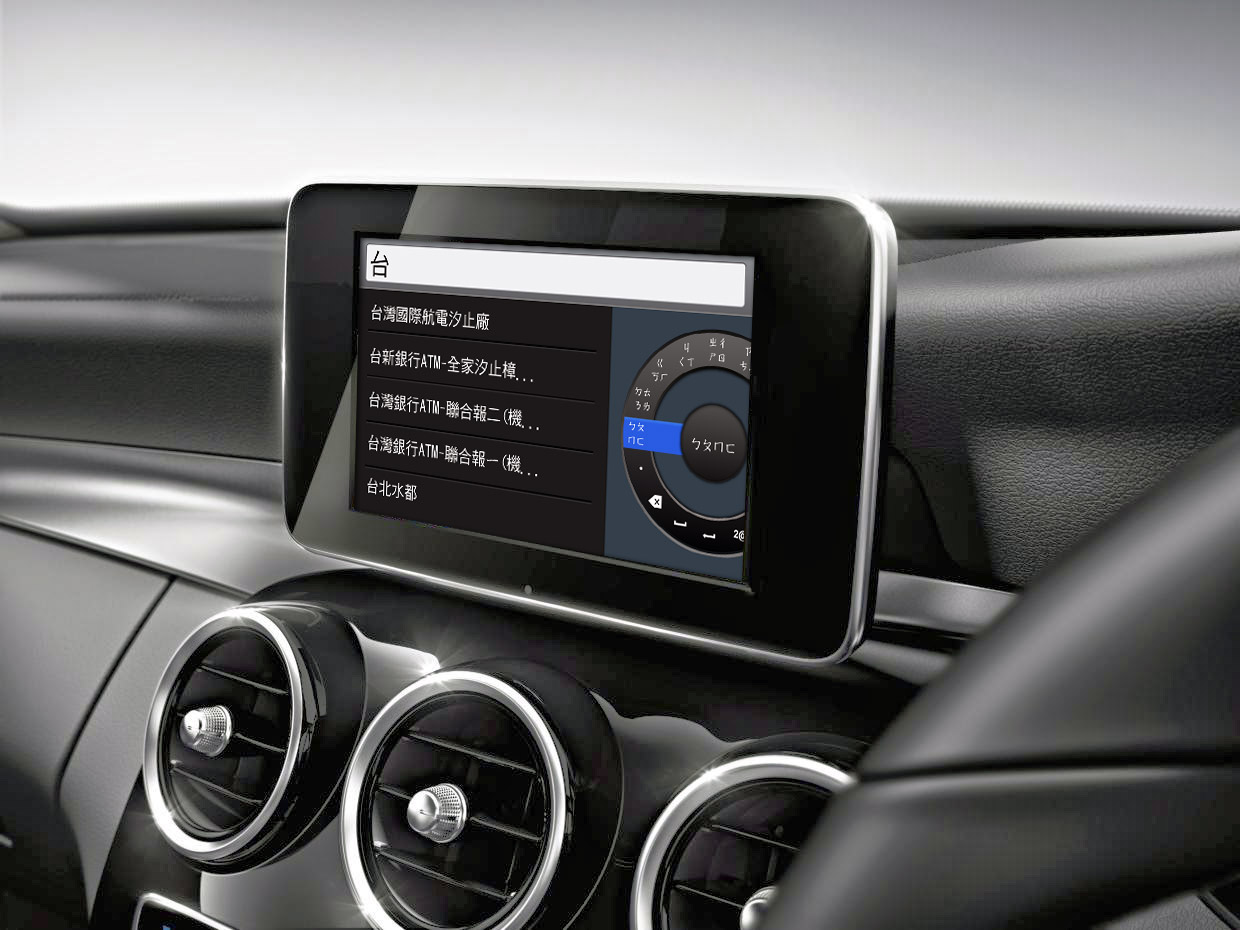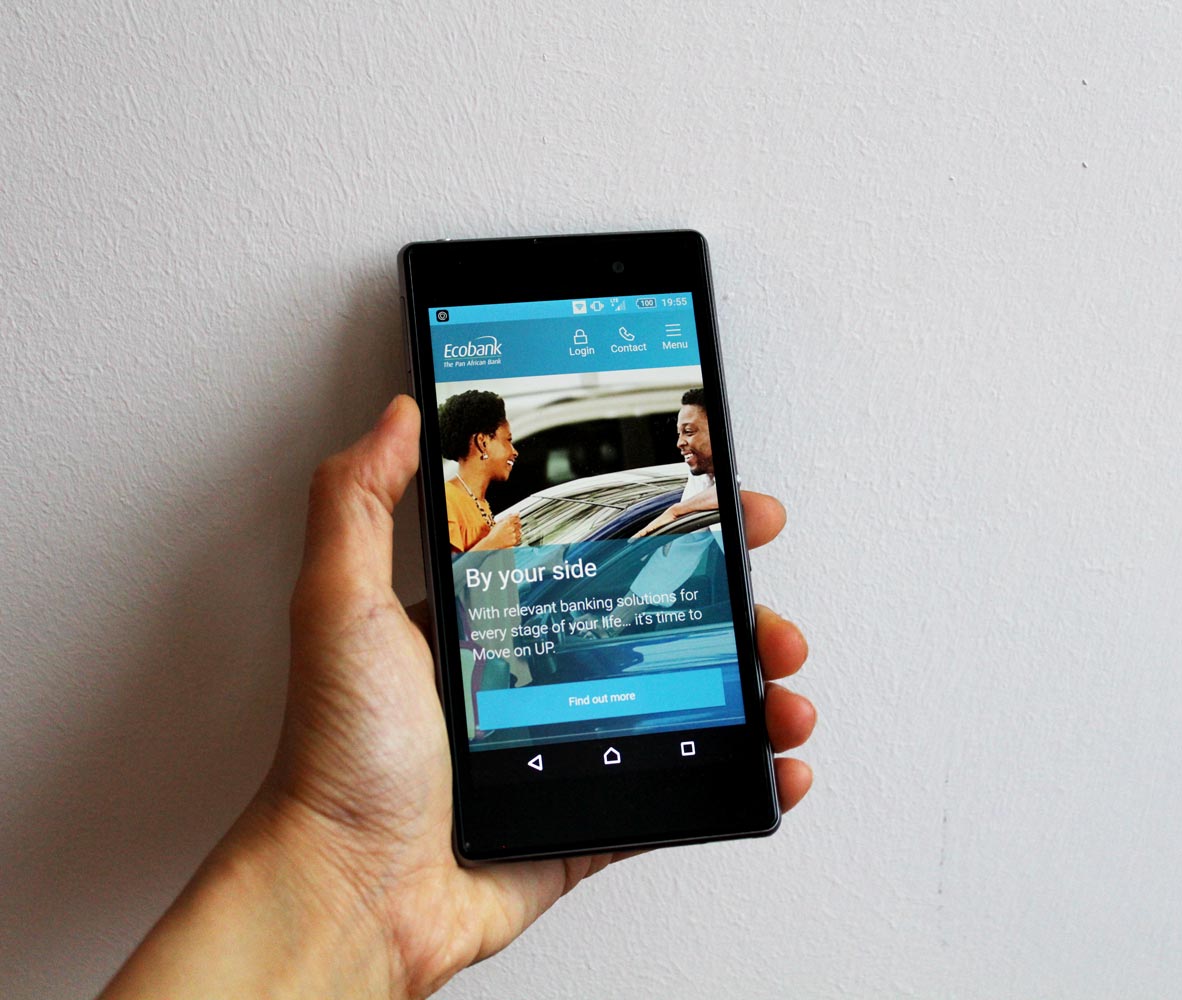While working at Garmin, I was assigned a challenging project with Mercedes Benz. As the UX designer I was working between graphic designers and engineers, realising a radial texting interface for car dashboards, which was designed to write in Asian and Pacific languages.
The innovative speller system provided an effective way of non-Latin text input while driving. It supported Asian and Pacific languages including HK Changjie, HK strokes, Korean, Thai, China Pinyin, and Phonetic.
My task was to research and define the human-machine interactions and communicate them to the engineers for acoustics, displays and electrics as well as to the marketing team, the project managers, programmers and visual designers.
Project backgrounds and objectives
Trusted by Daimler AG, Garmin Taiwan approached the relationship as a partnership to provide exceptional product quality in the auto OEM space. There were several big challenges of this project:
First of all, the conversion of the input method of Latin-based text to the much more illegible and myriad characters of the Asian languages.
Secondly, the user behaviours in Asia differ substantially from the Western users, demanding the use of several languages – phonetic and logographic characters – within a single texting flow. So, how can we implement the multi-language input without distorting the consistency through the entire Auto OEM system with the new radial menu interface control? And finally, how can the much higher distraction level for the driver using multi-language text input be reduced?
Process
Discover
Interview users, collect data and study human factors
Define
Establish design principles
Design
Identify design changes and create wireframes
Deliver
Develop and evaluate
Discover
Interview users, collect data and study human factors
1. Different language character and keypad research
Different language keypads on various types (brands) of devices including feature phones were analysed to realise relations between the keys and input behaviours of different languages. Meanwhile, native speakers and language experts were interviewed to understand users’ habitudes of input methods as well as of the dashboard usage through local cultures.


2. Knob behaviour research
With the scenario of driving, factors of physical operations correlate to visual navigation and are critical to the interaction design. Therefore, physical mock-ups of knobs were used to test human factors. The outcomes were integrated into the speller design for the navigation systems.

Define
Establish design principles
Based on the research results from the previous phases, the alphabet/characters and the formation rules of compound words and word groups of different input methods were figured out. Then based on the similarities and differences across the input methods, the design principles were established for operation efficiency and consistency.


Design
Identify design changes and create wireframes
Interactions of each input method were designed based on knob functionality. In the meanwhile, to accomplish the conversion of the radial interface to Asian character-sets, I could convinced the UX team at Garmin Headquarters to several main changes. One was the reposition of radial dial towards the display centre, which allows more characters to be presented on the dial. Then a set of wireframes was put together in a storyboard to define how a series of user interactions would work.
To guarantee consistency and efficiency, reviews went back and forth between different input methods.


Deliver
Develop and evaluate
I was working between the developers and the UI designers, to realise the build of physical prototypes. Then, the usability and performance of interface were evaluated and modified based on user feedback.


Results and Impacts
Daimler AG had signed a four-year contract with Garmin for incorporating the Garmin Nav System into their infotainment system. It had been successfully brought to the market under the name Garmin Map Pilot.



